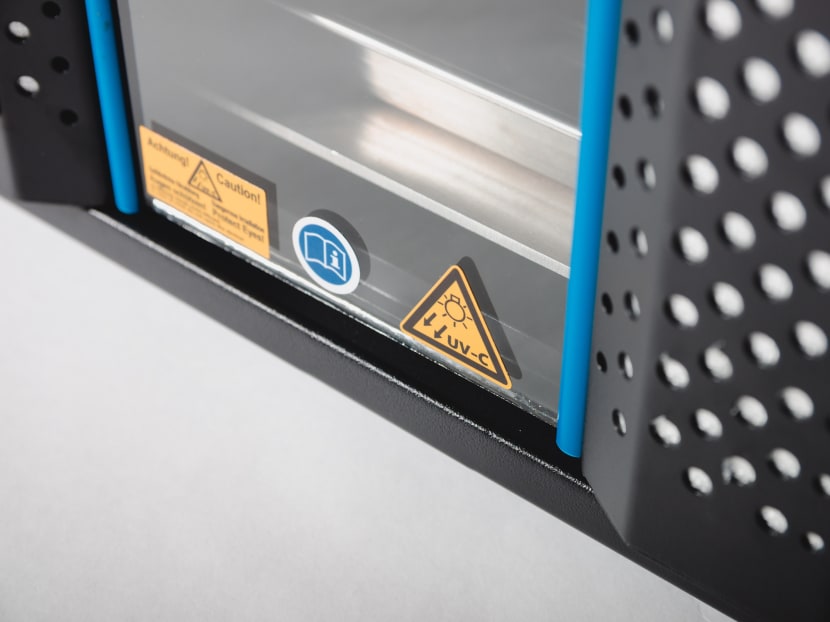Many ultraviolet-C sterilisers sold online unsafe for home use, pose risk of radiation exposure: NEA
SINGAPORE — Households have been advised not to use ultraviolet-C (UVC) sterilisers at home as many such devices marketed for home use lack safety features that protect users from unintended or accidental exposure to radiation.

The National Environment Agency warns of the risk of using ultraviolet sterilisers after there has been a rise in demand for such devices since the start of the Covid-19 pandemic.
SINGAPORE — Households have been advised not to use ultraviolet-C (UV-C) sterilisers at home as many such devices marketed for home use lack safety features that protect users from unintended or accidental exposure to radiation.
In an advisory on Tuesday (Nov 23), the National Environmental Agency (NEA) said that UV-C-based disinfection is intended only for industrial or commercial settings with appropriate safety features and practices.
Exposure to UV-C radiation can cause eye or skin injuries, although no cases here have been reported so far, NEA said in response to TODAY’s queries.
Examples of injuries include damage to the cornea, with burning sensations and sensitivity to light, as well as burns resulting in redness and peeling of the skin.
The warning came after there has been a rise in demand for such devices since the start of the Covid-19 pandemic.
NEA added that it has been working with major retailers and online sales platforms to actively remove listings of unsafe UV-C sterilisers.
To date, about 8,000 online listings have been removed.
“While NEA has made every effort to work with major online sales platform operators in this regard, given the vast number of retailers that may advertise on online sales platforms from time to time, the public is advised to exercise discretion and vigilance when purchasing UV-C sterilisers,” the agency said.
Members of the public who intend to buy UV-C sterilisers for home use should choose only those which have “safety engineering” features that prevent users from being exposed to the radiation, the agency said.
Examples of such safety engineering features are:
- For portable UV-C lamps or desk lamps – Features such as motion sensors that automatically switch off the UV-C source when a person or animal approaches it, to prevent any accidental exposure
- For handheld UV-C sterilisers or portable UV-C wands – Features such as gravity sensors that automatically switch off the UV-C source when the device faces upward to prevent UV-C radiation exposure to the user’s eyes
- For UV-C bulbs or tube lamps – Features such as motion sensors that automatically switch off the UV-C source when a person or animal approaches it
- For UV-C disinfection boxes – Features that switch off the UV-C light when the box is open
Those who have bought UV-C sterilisers that do not contain any safety features are advised to stop using them immediately, especially if the devices are intended for use on the skin, NEA said.
Last year, when TODAY contacted NEA to ask about the risk of using such devices, it said that there was a need for careful calibration and monitoring.
When asked how safe they are for consumers, medical professionals told TODAY then that people should leave this method of disinfection to trained professionals and proceed with high caution when using UV-C light sterilisers at home.
Professor Christian Kurtsiefer, from the National University of Singapore’s department of physics in the Faculty of Science, cautioned then: “If a UV light source kills germs, it is also harmful to the human skin and may cause anything from a sunburn to more serious damage to the skin cells.”
Dr Ling Moi Lin, director of the Singapore General Hospital's department of infection prevention and epidemiology, said: “One should not be able to look at the UV-C light when it is being shone. When it is turned on, nobody should be in the room.”
She added: "Maybe it is a nice-to-have item but it’s not a must-have. Just use the usual disinfectants to clean whatever you need to clean. You could easily wipe down your phone if you want to disinfect it.”








